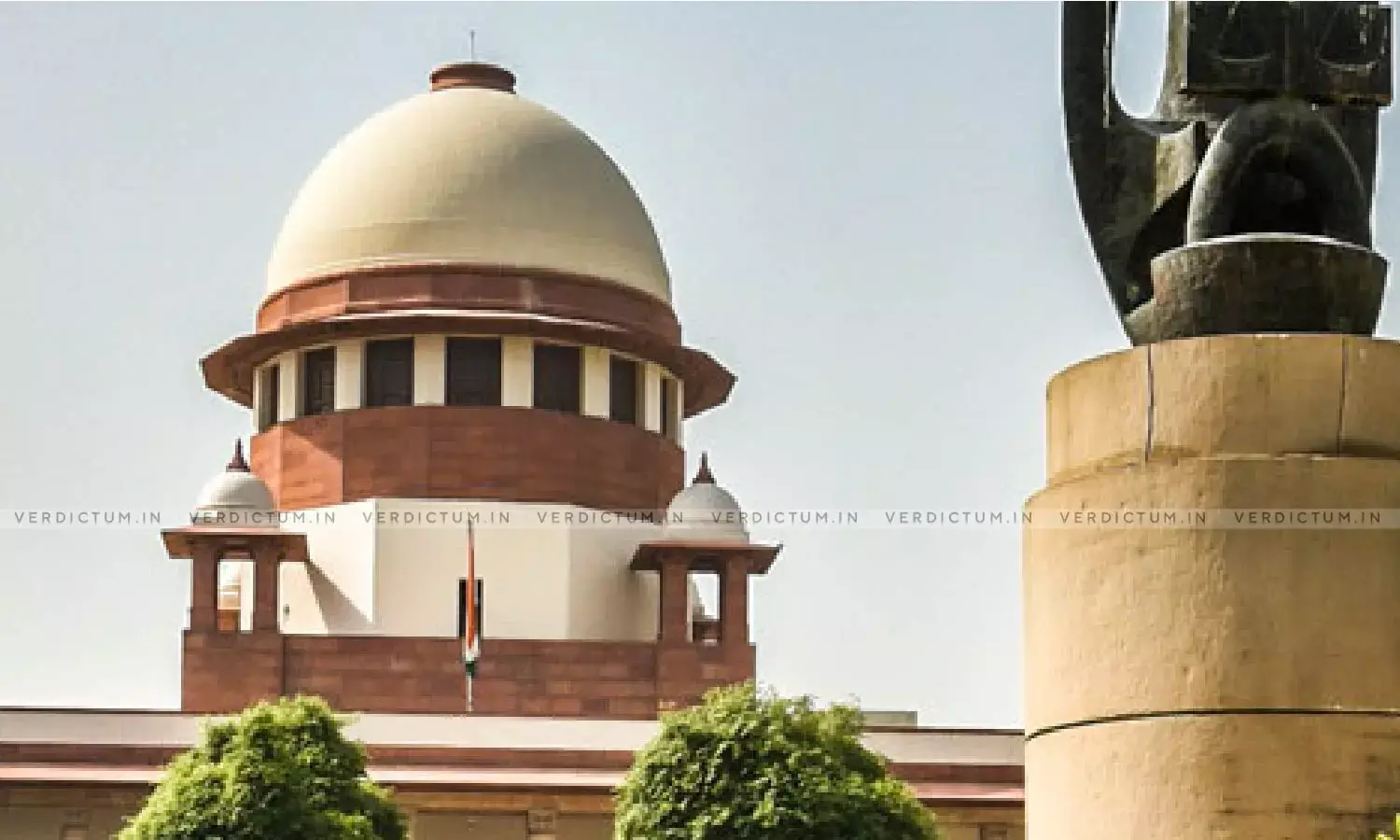Supreme Court Explains Doctrine Of Prospective Overruling In Its Order Allowing Tax Dues On Minerals From April 2005 Onwards
The Supreme Court has explained the Doctrine of prospective overruling in its order which clarified that the ruling of July 25, 2024 that royalty paid by mining operators to the Central Government is not a tax will not have only prospective effect.
The Bench of Chief Justice DY Chandrachud, Justice Hrishikesh Roy, Justice Abhay S. Oka, Justice J.B. Pardiwala, Justice Manoj Misra, Justice Ujjal Bhuyan, Justice Satish Chandra Sharma, and Justice Augustine George Masih said that the doctrine of prospective overruling is applied when a constitutional court overrules a well-established precedent by declaring a new rule but limits its application to future situations and the underlying objective is to avert injustice or hardships.
The Court pointed out the following principles emerge on the application of the doctrine:
a. The power of this Court to mould the relief claimed to meet the justice of the case is derived from Article 142;
b. It is applied by this Court while overruling its earlier decision, which was otherwise final. It has also been applied when deciding on an issue for the first time.
c. The object is to validate all the actions taken before the date of declaration in the larger public interest. The doctrine does not validate an invalid law, but the declaration of invalidation takes effect from a future date;
d. Cases that have attained finality are saved because doing otherwise would cause unnecessary and avoidable hardships;16
e. It is applied to bring about a smooth transition of the operation of law without unduly affecting the rights of the people who acted upon the overruled law;
f. It is a device innovated to avoid: (i) reopening settled issues, (ii) refund of amounts collected under invalid legislation, and (iii) multiplicity of proceedings; and
g. It is applied to avoid social and economic disruptions and give sufficient time to the affected entities and institutions to make appropriate changes and adjustments
"The doctrine of prospective overruling has been applied by this Court in situations where the new declaration results in the invalidation of legislation, which would otherwise have been valid under the old declaration. The doctrine has also been used where this Court has declared a legislation as ultra vires," the Bench said.
Furthermore, the bench said that in the case of taxing statutes, such a declaration would make the State liable to refund all amounts collected under the invalid legislation. "Therefore, this Court declares the new rule to apply prospectively not only to secure the revenues of the State but also to protect the rights and obligations crystallized by persons and entities under the old regime," it said.
The Court in its order today held: 1) While the States may levy or renew demands of tax, if any, pertaining to Entries 49 and 50 of List II of the Seventh Schedule in terms of the law laid down in the decision in MADA (supra) the demand of tax shall not operate on transactions made prior to 1 April 2005; 2) The time for payment of the demand of tax shall be staggered in instalments over a period of twelve years commencing from 1 April 2026; and, 3) The levy of interest and penalty on demands made for the period before 25 July 2024 shall stand waived for all the assesses.
Pertinently, on July 31, the Court had reserved its order on the issue of whether royalty levied by the Centre on mines and mineral-bearing lands since 1989 will be refunded to the states.
In a significant verdict on July 25, a nine-judge Constitution bench headed by Chief Justice D.Y. Chandrachud, by a majority 8:1 verdict, held that the legislative power to tax mineral rights vests with the states and the royalty paid on minerals is not a tax. The verdict, which gave a huge revenue boost to mineral-rich states, however, led to another dispute with regard to the operation of the verdict. The major questions that the Bench examined were whether royalties on mining leases should be considered as tax and whether the States have the power to levy royalty/tax on mineral rights after the enactment of the Parliamentary law MMDR Act. The Court also held that the expression "land" in Entry 49 of List II covers all categories of land. The matter was referred to a 9-judge bench in 2011.
A 3-Judge bench headed by Justice SH Kapadia had framed eleven questions to be referred to the 9-judge bench. On March 14, 2024, the Bench reserved the judgment after arguments were concluded by the parties. The main issue was whether the royalties on mining leases should be considered as tax and whether the States have the power to levy royalty/tax on mineral rights. The hearing went on for 8 long days.
Cause Title: Mineral Area Development Authority Etc. v. M/S Steel Authority Of India & Ors. [Civil Appeal Nos. 4056-4064/1999]
Click here to read/download the Order



